- Surgical Procedures
- MedSpa
- Weight Loss
- Before & Afters
- About
- Patient Resources
- Testimonials
- Videos
- Contact
To start you can watch this Live Surgery Showing the Double Eyelid Crease Procedure with an Epicanthoplasty
Watch Dr. Young's Asian Blepharoplasty Double Eyelid with Medial Epicanthoplasty Live Surgery
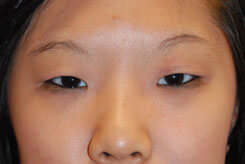
Before Asian Double Eyelid Surgery and Medial Epicanthoplasty
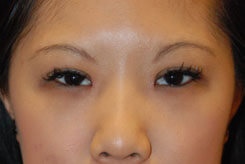
After Asian Double Eyelid Surgery and Medial Epicanthoplasty
Note: Individual results will vary. Images do not constitute a promise or representation of any particular outcome or experience.
Before and After Creating the Double Eyelid Crease with the Orbicularis Levator Fixation Technique with Medial Epicanthoplasty (Close up View of the Left Eye).
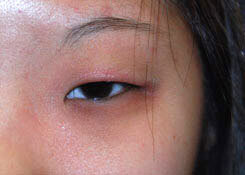
Before Asian Double Eyelid Surgery and Medial Epicanthoplasty for Single Eyelid Fold | Crease and Epicanthal Folds
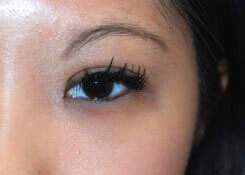
After Asian Double Eyelid Surgery and Medial Epicanthoplasty for Single Eyelid Fold | Crease and Epicanthal Folds
Note: Individual results will vary. Images do not constitute a promise or representation of any particular outcome or experience.
This page will go into more depth regarding the medial epicanthoplasty surgery. Epicanthal folds are the extra skin in the middle | medial part of the eye that covers part of the eye in this corner. The effect of having epicanthal folds is that the eye looks smaller, especially in the horizontal dimension. There are 4 types of epicanthal folds. Type 1 is the situation where there is no extra skin that covers this area and the lacrimal lake is completely exposed. The lacrimal lake is the middle part of the eye that is the fleshy red part at the medial | middle corner. This is the situation that is often found in the caucasian patient. Type 2 is when there is some covering of the lacrimal lake by the epicanthal fold of skin. Type 3 is when there the lacrimal lake is completely covered. Type 4 is when the fold comes from the bottom eyelid. The person above has Type 3. As you will find out the variation from type 1 to 4 is a gradual transition. The medial epicanthoplasty is a procedure that moves this fold of skin to the upper eyelids more and help to open up the eye in a horizontal direction.
To change this part of the eyelid, the medial epicanthoplasty procedure we like to do to change the epicanthal fold was developed by Dr. Park. Below are some drawings on how we do this procedure. The first drawing shows some anatomy and the terms we use to talk about this subject. Just laterally from the epicanthal fold (blue arrow) is the lacrimal lake the fleshy red part (yellow arrow), the pretarsal area (green arrow) is the part of the eyelid under the crease. The picture below shows how we draw out the procedure and move the tissue medially to decrease the presence of the epicanthal folds:


Why is this medial epicanthoplasty better than other ways? In the past, the epicanthoplasty by excising tissue in the area closer to the nose than the epicanthal fold in order to pull this tissue medially. These approaches often lead to much more scarring. This procedure has a way of rearranging tissue in this area to decrease the epicanthal fold without much tension. The results have much less scarring than traditional approaches to the epicanthal folds and epicanthoplasty.
Below is a close of a before and after medial epicanthoplasty to improve the epicanthal folds.
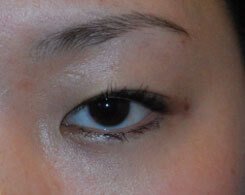
Before Close ups Asian Double Eyelid Crease Formation | Blepharoplasty and Medial Epicanthoplasty for Epicanthal Folds
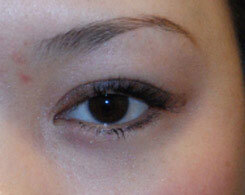
After Asian Double Eyelid Surgery and Medial Epicanthoplasty for Single Eyelid Fold | Crease and Epicanthal Folds
Note: Individual results will vary. Images do not constitute a promise or representation of any particular outcome or experience.
“My goal was to find a method to bring back a person’s natural youthfulness without the operated, unnatural look and that is why I have my patients bring in photos of them when they were age 5 to 30. My YoungVitalizer helps restore natural and youthful contours they haven’t seen in years.”
—Dr. Philip Young, Seattle Facial Plastic Surgeon




Yes. 90-90% of the time the epicanthoplasty is done with the Asian Double Eyelid Crease Procedure. There are times when someone already has a fold done somewhere else and this is an additional procedure that is done to improve what was already done with the Asian Double Eyelid Crease Procedure.
Usually 5-6 days later. With eyelid procedures, you can take out the sutures earlier to help with the healing and avoid scarring.
We don’t like to as the absorbable sutures tend to cause more inflammation and possibly more scarring.
Yes you can. Usually people come in and have a need for both the medial epicanthoplasty and the double eyelid surgery. Less commonly, people are wanting the epicanthoplasty and not the double eyelid surgery. But this can be done as it is all based on how you make your drawings and plan out the procedure.
Yes you can but this is much less common. The main difference between the Caucasian Eye and the Asian Eye is the medial epicanthal fold and the double eyelid anatomy and NOT the Lateral Epicanthal | Eye area. The lateral epicanthoplasty is much less commonly done and tends to recur and relapse. The results have not been as good as the medial epicanthoplasty. It is less succussful probably for that reason mentioned that the main difference is in the medial epicanthal area and not the lateral canthal area.
It depends if you are doing the medial epicanthoplasty with or without the double eyelid surgery. Generally, it will be between 1000-4000 dollars. This is always dependent on who you go to and what geographic area. Also, if you do the medial epicanthoplasty under local anesthesia or some type of sedation the costs could be dramatically different. Using iv sedation | intravenous sedation will generally add 1-2000 dollars to the procedure. Many doctors do the epicanthoplasty in their office so they are able to control the pricing and keep anesthesia pricing down to some reasonable amount. For most hospitals that facial plastic surgeons perform the medial epicanthoplasty will charge around 1000 for each hour of anesthesia time. Anesthesiologists charge about 200-500 dollars per hour and the rest are facility fees.
I would first read our blepharoplasty | eyelift patient care package. This will help you prepare for the surgery as well as get you informed of the after | post procedure care. For your incision and to take care of the eye area where the double eyelid and medial epicanthoplasty took place you can also read this page: Wound Care and Scar Prevention.
